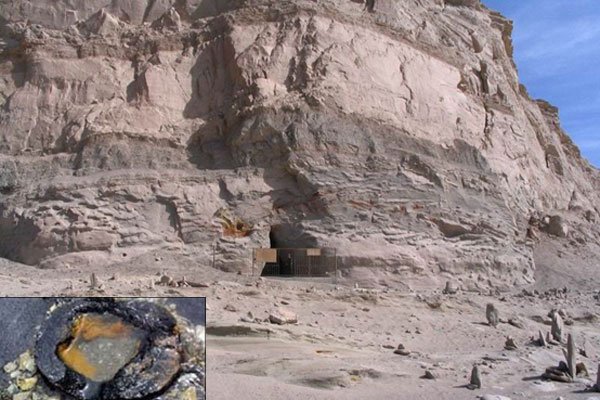Advanced 1,50,000-year-old pipework found under Chinese Pyramid
Who could have built such a complex structure 150,000 years ago, at a time when the man had barely started using fire?
The Baigong pipes are one of the greatest mysteries of the ancient world. They can be found inside a badly-eroded pyramid standing on top of Mount Baigong in the Qinghai Province of northwestern China.
The collapsing pyramid once had triangular entrances on all three sides but over time, two of them caved in and are currently out of reach.

The one that remains goes deep inside the mountain. Iron scraps and strange-looking stones litter the floor, suggesting that a long time ago, this place saw activity.
The only surviving cave houses an intricate network of metal pipes, with diameters as large as 1.5 feet and as small as a toothpick. Dozens of pipes run straight into the mountain, leading who knows where.
Some of the archaeologists who inspected the site consider the pipework could have once supplied water inside the pyramid.


Their theory seems to be backed up by a multitude of iron pipes found on the shores of nearby Lake Toson. Those are also available in a range of lengths and diameters, some reaching above the water surface, others buried below.
Intrigued by these out of place artifacts, the Beijing Institute of Geology analyzed the pipes using a technique called thermoluminescence. This method allowed them to determine when the pipes were last subjected to high temperatures. The analysis revealed the pipes must have been crafted over 150,000 years ago.
And the mystery deepens even further. Analysis performed at a government-operated smeltery couldn’t determine all the exact compounds forming the pipes. Although the pipes were made up of ferric oxide, silicon dioxide, and calcium oxide, they also contained 8% of an unknown material.

There is no easy way to explain this mind-boggling discovery. Human presence in the region can be traced back to 30,000 years ago but was mainly composed of nomadic tribes. It would have been impossible for a primitive society to leave behind such an advanced structure.
A number of theories tried to explain who could have built these pipes and what purpose they might have served. An advanced but long-forgotten human civilization could have built a facility that required coolant, and the pipes leading to the nearby lake are all that’s left.
Another intriguing aspect is that the water in the lake is salty. And although there is a freshwater lake in the vicinity, there are no pipes leading into it. Why were they doing with all the saltwater?
A potential answer is an electrolysis. When an electric current is run through salt water, it breaks down the water into hydrogen and oxygen. Such products are a must-have for any civilization operating aircraft. That particular civilization doesn’t even have to be human.
At the other end of the theory spectrum, we have several geologists who believe the pipes are simply some type of unusual but natural formation.
The fact of the matter is that these are all just theories attempting to explain something that simply doesn’t fit with our currently accepted system of beliefs.
One thing is certain – until history is rewritten, anomalous artifacts such as the Baigong Pipes have no place in conventional textbooks.





